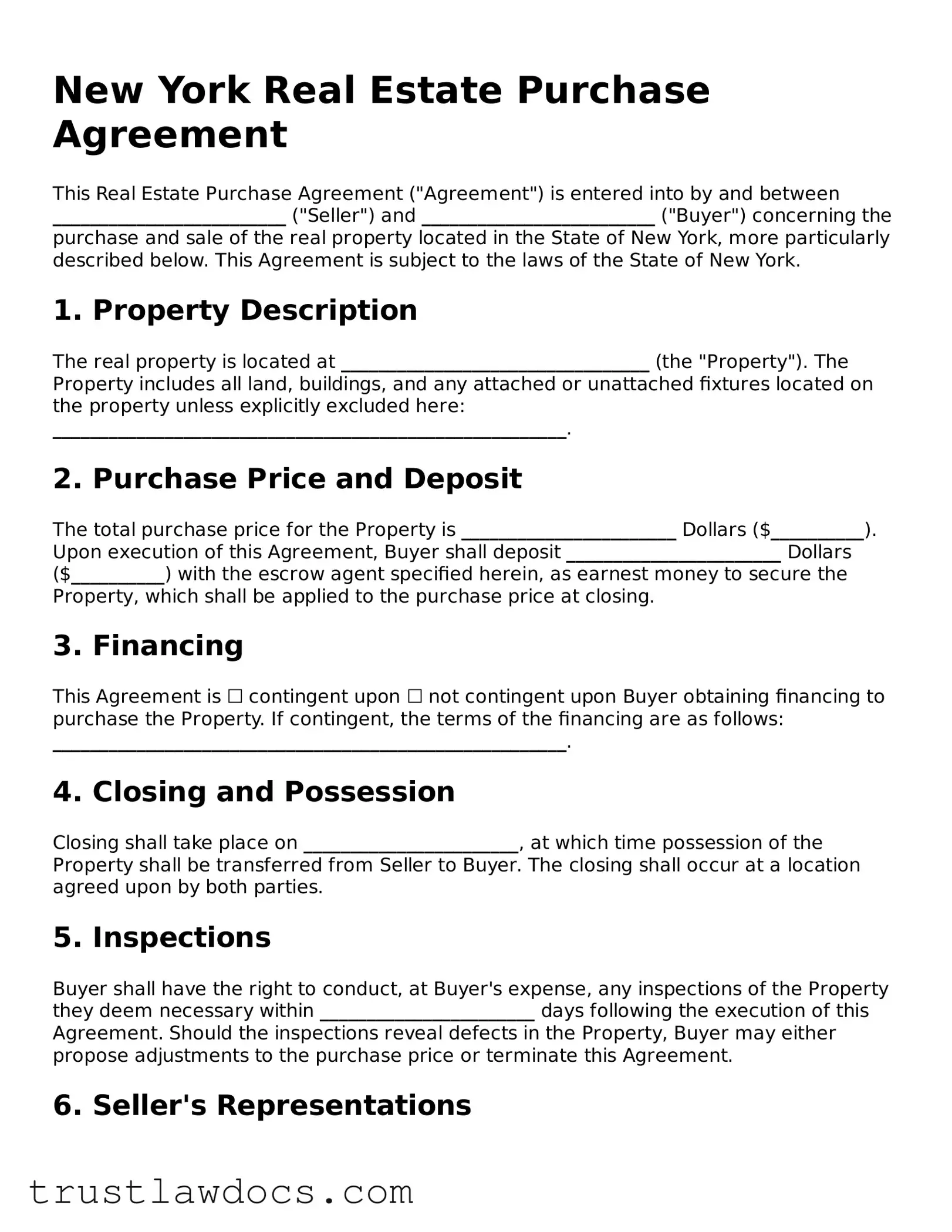New York Real Estate Purchase Agreement
This Real Estate Purchase Agreement ("Agreement") is entered into by and between _________________________ ("Seller") and _________________________ ("Buyer") concerning the purchase and sale of the real property located in the State of New York, more particularly described below. This Agreement is subject to the laws of the State of New York.
1. Property Description
The real property is located at _________________________________ (the "Property"). The Property includes all land, buildings, and any attached or unattached fixtures located on the property unless explicitly excluded here: _______________________________________________________.
2. Purchase Price and Deposit
The total purchase price for the Property is _______________________ Dollars ($__________). Upon execution of this Agreement, Buyer shall deposit _______________________ Dollars ($__________) with the escrow agent specified herein, as earnest money to secure the Property, which shall be applied to the purchase price at closing.
3. Financing
This Agreement is ☐ contingent upon ☐ not contingent upon Buyer obtaining financing to purchase the Property. If contingent, the terms of the financing are as follows: _______________________________________________________.
4. Closing and Possession
Closing shall take place on _______________________, at which time possession of the Property shall be transferred from Seller to Buyer. The closing shall occur at a location agreed upon by both parties.
5. Inspections
Buyer shall have the right to conduct, at Buyer's expense, any inspections of the Property they deem necessary within _______________________ days following the execution of this Agreement. Should the inspections reveal defects in the Property, Buyer may either propose adjustments to the purchase price or terminate this Agreement.
6. Seller's Representations
Seller represents that as of the closing date, the Property will be free of liens and encumbrances, except as specifically noted in this Agreement, and that the physical condition of the Property will be substantially the same as at the time of the Buyer's inspection.
7. Closing Costs
Closing costs, including but not limited to attorneys' fees, title insurance, and recording fees, shall be paid as follows:
- Buyer's costs: _________________________________________________.
- Seller's costs: _________________________________________________.
8. Notices
All notices under this Agreement must be in writing and delivered by mail, email, or in person to the addresses specified herein:
Seller: _________________________________________________.
Buyer: _________________________________________________.
9. Governing Law
This Agreement shall be governed by and construed in accordance with the laws of the State of New York.
10. Signature
IN WITNESS WHEREOF, the parties hereto have executed this Agreement as of the date first above written.
Seller's Signature: _______________________ Date: __________
Buyer's Signature: _______________________ Date: __________
